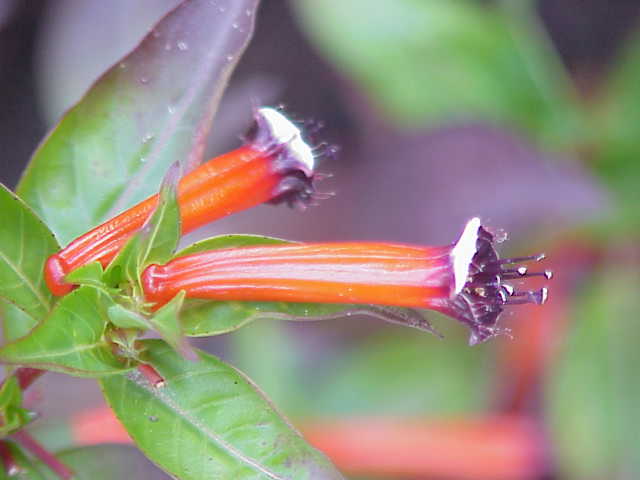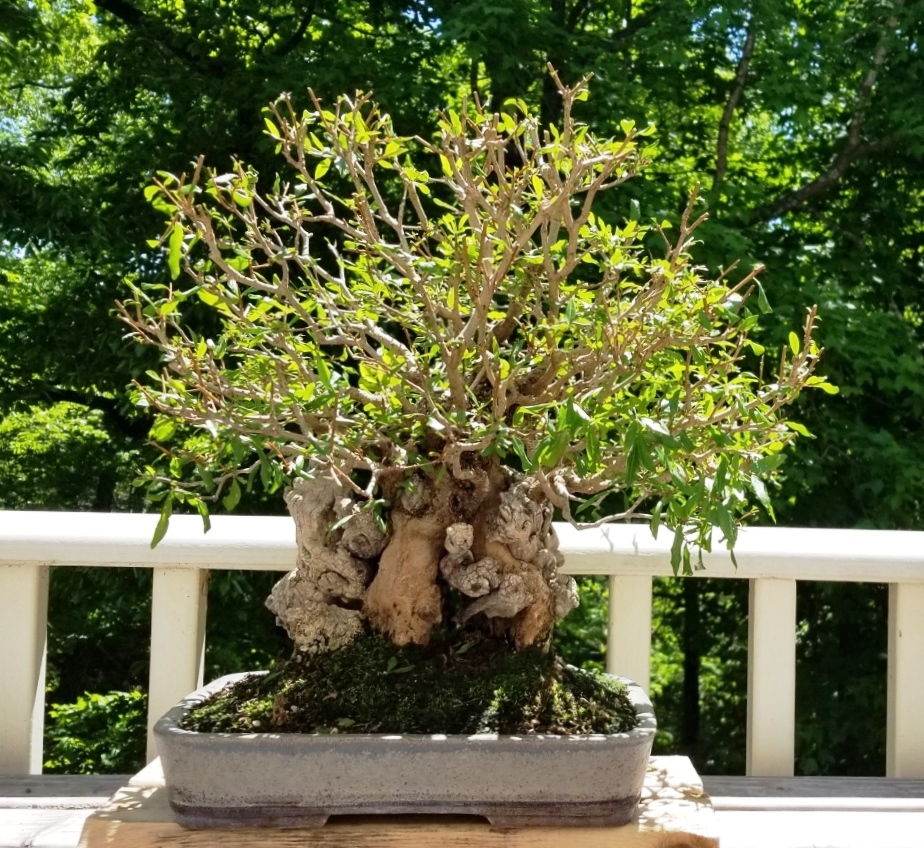|
Lythraceae
Lythraceae is a family (biology), family of flowering plants, including 32 genus, genera, with about 620 species of Herbaceous plant, herbs, shrubs, and trees. The larger genera include ''Cuphea'' (275 spp.), ''Lagerstroemia'' (56), ''Nesaea (plant), Nesaea'' (50), ''Rotala (plant), Rotala'' (45), and ''Lythrum'' (35). It also includes the members of the former families of the pomegranate (''Punica granatum'', formerly in Punicaceae) and of the water caltrop (''Trapa natans'', formerly in Trapaceae). Lythraceae has a worldwide distribution, with most species in the tropics, but ranging into temperate climate regions as well. The family is named after the type genus, ''Lythrum'', the loosestrifes (e.g. ''Lythrum salicaria'' purple loosestrife) and also includes henna (''Lawsonia inermis''). It now includes the pomegranate, formerly classed in a separate family Punicaceae. The family also includes the widely cultivated Lagerstroemia, crape myrtle trees. Botanically, the leaves are ... [...More Info...] [...Related Items...] OR: [Wikipedia] [Google] [Baidu] |
Punicaceae
''Punica'' is a small genus of fruit-bearing deciduous shrubs or small trees in the flowering plant family Lythraceae. The better known species is the pomegranate (''Punica granatum''). The other species, the Socotra pomegranate (''Punica protopunica''), is Endemism, endemic to the island of Socotra. It differs in having pink (not red) flowers and smaller, less sweet fruit. Although ''Punica'' was previously placed in its own family Punicaceae, recent phylogenetic studies have shown that it belongs in the family Lythraceae, and it is classified in that family by the Angiosperm Phylogeny Group. The name is derived from the Latin word for the pomegranate, ''malum punicum'', meaning "Carthage, Carthaginian apple". The oldest fossils of the genus are from the Eocene of Europe, with the genus being widespread in Europe during the Miocene epoch. Extant species Image:Цветущий гранат.jpg, Flowers of ''P. granatum'' References * * * Lythraceae Lythraceae ... [...More Info...] [...Related Items...] OR: [Wikipedia] [Google] [Baidu] |
Lythrum
''Lythrum'' is a genus of 38 species of flowering plants native to the temperate world. Commonly known as loosestrife (a name they share with ''Lysimachia'', which are not closely related), they are among 32 genera of the family Lythraceae. Description They are herbaceous annuals or perennials. Typically they have square stems, narrow stalkless leaves, and spikes of star-shaped flowers in shades of purple, pink and white. They are especially associated with boggy areas, river banks and ponds, though in cultivation they often tolerate drier conditions. The species ''L. salicaria'' (purple loosestrife) and ''L. virgatum'' are found in cultivation. Selected species Species include:''Lythrum'' L. |
Cuphea
''Cuphea'' is a genus containing about 260 species of annual and perennial flowering plants native to warm temperate to tropical regions of the Americas. The species range from low-growing herbaceous plants to semi-woody shrubs up to tall. Commonly they are known as cupheas, or, in the case of some species, as cigar plants. The generic name is derived from the Greek word κυφος (''kyphos''), meaning "bent," "curved," or "humped." Uses Several ''Cuphea'' species are popular ornamental plants or honey plants. '' C. ignea'' 'David Verity' and '' C. micropetalia'' are popular plants to attract hummingbirds. Some species of ''Cuphea'' are used to produce cuphea oil, of interest as sources of medium-chain triglycerides. For most purposes, cuphea oil is identical to coconut oil and palm oil; these are derived from strictly tropical plants however and – particularly in the latter case – the expanding production of which has caused a considerable amount of habitat des ... [...More Info...] [...Related Items...] OR: [Wikipedia] [Google] [Baidu] |
Pomegranate
The pomegranate (''Punica granatum'') is a fruit-bearing deciduous shrub in the family Lythraceae, subfamily Punica, Punicoideae, that grows between tall. Rich in symbolic and mythological associations in many cultures, it is thought to have originated from Afghanistan and Iran before being introduced and exported to other parts of Asia, Africa, and Europe. It was introduced into Spanish America in the late 16th century and into California by New Spain, Spanish settlers in 1769. It is widely cultivated throughout West Asia and the Caucasus region, South Asia, Central Asia, North Africa, north and tropical Africa, the drier parts of Southeast Asia, and the Mediterranean Basin. The fruit is typically in season in the Northern Hemisphere from September to February, and in the Southern Hemisphere from March to May. The pomegranate and its juice are variously used in baking, cooking, juice blends, garnish (food), garnishes, non-alcoholic drinks, and cocktails. Etymology The name ... [...More Info...] [...Related Items...] OR: [Wikipedia] [Google] [Baidu] |
Rotala (plant)
''Rotala'' is a genus of plants in the loosestrife family. Several species are used as aquarium An aquarium (: aquariums or aquaria) is a vivarium of any size having at least one transparent side in which aquatic plants or animals are kept and displayed. fishkeeping, Fishkeepers use aquaria to keep fish, invertebrates, amphibians, aquati ... plants. Species include: References External linksFlora of China Lythraceae genera {{Myrtales-stub ... [...More Info...] [...Related Items...] OR: [Wikipedia] [Google] [Baidu] |
Calyx Tube
A sepal () is a part of the flower of angiosperms (flowering plants). Usually green, sepals typically function as protection for the flower in bud, and often as support for the petals when in bloom., p. 106 Etymology The term ''sepalum'' was coined by Noël Martin Joseph de Necker in 1790, and derived . Collectively, the sepals are called the ''calyx'' (plural: calyces), the outermost whorl of parts that form a flower. The word ''calyx'' was adopted from the Latin ,Jackson, Benjamin, Daydon; A Glossary of Botanic Terms with their Derivation and Accent; Published by Gerald Duckworth & Co. London, 4th ed 1928 not to be confused with 'cup, goblet'. The Latin ''calyx'' is derived from Greek 'bud, calyx, husk, wrapping' ( Sanskrit 'bud'), while is derived from Greek 'cup, goblet'; both words have been used interchangeably in botanical Latin. Description The term ''tepal'' is usually applied when the parts of the perianth are difficult to distinguish, e.g. the petals a ... [...More Info...] [...Related Items...] OR: [Wikipedia] [Google] [Baidu] |
Lagerstroemia
''Lagerstroemia'' (), commonly known as crape myrtle (also spelled crepe myrtle or crêpe myrtle), is a genus of around 50 species of deciduous and evergreen trees and shrubs native to the Indian subcontinent, southeast Asia, northern Australia, and other parts of Oceania, cultivated in warmer climates around the world. It is a member of the family Lythraceae, which is also known as the loosestrife family. These flowering trees are beautifully colored and are often planted both privately and commercially as ornamentals. Etymology The genus ''Lagerstroemia'' was first described by Carl Linnaeus. It is named after Swedish merchant , a director of the Swedish East India Company, who supplied Linnaeus with plants he collected. Description Crape myrtles are chiefly known for their colorful and long-lasting flowers, which occur in summer. Most species of ''Lagerstroemia'' have sinewy, fluted stems and branches with a mottled appearance that arises from having bark that sheds through ... [...More Info...] [...Related Items...] OR: [Wikipedia] [Google] [Baidu] |
Nesaea (plant)
''Ammannia'' is a genus of around 100 species of plants often referred to as redstems from wet areas in America, Africa, Asia, Australia and Europe. Several species are grown as decorative plants in aquariums. The genus was named (but not published) by William Houstoun and later published by Linnaeus, who later indicated that the name honored Paul Amman. However, Philip Miller, who received Houstoun's manuscripts on Houston's death, stated that it honored Johann Amman. Species , Plants of the World Online Plants of the World Online (POWO) is an online taxonomic database published by the Royal Botanic Gardens, Kew. History Following the Convention on Biological Diversity, the Royal Botanic Gardens in Kew launched Plants of the World Online i ... accepts 107 species: References Lythraceae genera {{Myrtales-stub ... [...More Info...] [...Related Items...] OR: [Wikipedia] [Google] [Baidu] |
Ovary (plants)
In the flowering plants, an ovary is a part of the female reproductive organ of the flower or gynoecium. Specifically, it is the part of the pistil which holds the ovule(s) and is located above or below or at the point of connection with the base of the petals and sepals. The pistil may be made up of one carpel or of several fused carpels (e.g. dicarpel or tricarpel), and therefore the ovary can contain part of one carpel or parts of several fused carpels. Above the ovary is the style and the stigma, which is where the pollen lands and germinates to grow down through the style to the ovary, and, for each individual pollen grain, to fertilize one individual ovule. Some wind pollinated flowers have much reduced and modified ovaries. Fruits A fruit is the mature, ripened ovary of a flower following double fertilization in an angiosperm. Because gymnosperms do not have an ovary but reproduce through fertilization of unprotected ovules, they produce naked seeds that do ... [...More Info...] [...Related Items...] OR: [Wikipedia] [Google] [Baidu] |
Water Caltrop
The water caltrop is any of three extant species of the genus ''Trapa'': ''Trapa natans'', ''Trapa bicornis'' and the endangered ''Trapa rossica''. It is also known as buffalo nut, bat nut, devil pod, ling nut, mustache nut, singhara nut or water chestnut. The species are floating annual aquatic plants, growing in slow-moving freshwater up to deep, native to warm temperate parts of Eurasia and Africa. They bear ornately shaped fruits, which in the case of ''T. bicornis'' resemble the head of a bull or the silhouette of a flying bat. Each fruit contains a single very large, starchy seed. ''T. natans'' and ''T. bicornis'' have been cultivated in China and the Indian subcontinent for the edible seeds for at least 3,000 years. Description The water caltrop's submerged stem reaches in length, anchored into the mud by very fine roots. It has two types of leaves: finely divided, feather-like submerged leaves borne along the length of the stem, and undivided floa ... [...More Info...] [...Related Items...] OR: [Wikipedia] [Google] [Baidu] |




